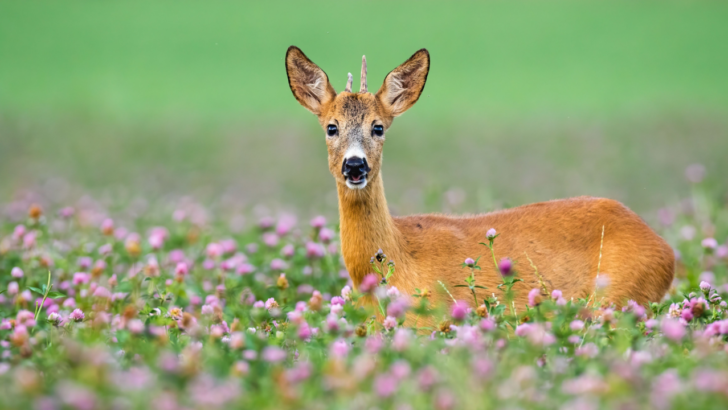It’s beyond frustrating to look out your window and see your garden stripped clean—flowers gone, leaves chewed, and stems standing like sad little reminders. If your yard is starting to feel more like a deer buffet than a flower bed, it’s time to fight back (beautifully). Deer will avoid certain plant varieties due to bitter tastes, strong smells, or even poisonous properties.
These deer-resistant annual flowers not only bring color and charm to your garden, but they’re also rarely on the menu for wandering wildlife. Fill those bare spots with blooms that can stand their ground—literally.
1. Annual Vinca (Catharanthus roseus)

Image credit: Depositphotos.
From early summer until the first frost, annual vinca blooms profusely in shades of pink or white, sometimes with a contrasting eye. The glossy green foliage is also attractive, featuring a distinctive pale midrib. A low-maintenance plant does not require deadheading or pinching and will bloom even in high heat.
Though tolerant of drought, annual vinca prefers moist, well-drained soil in full sun to partial shade. Ultimately, these plants are bitter and have some toxic quality that deer will stay clear of!
2. Snapdragon (Antirrhinum majus)
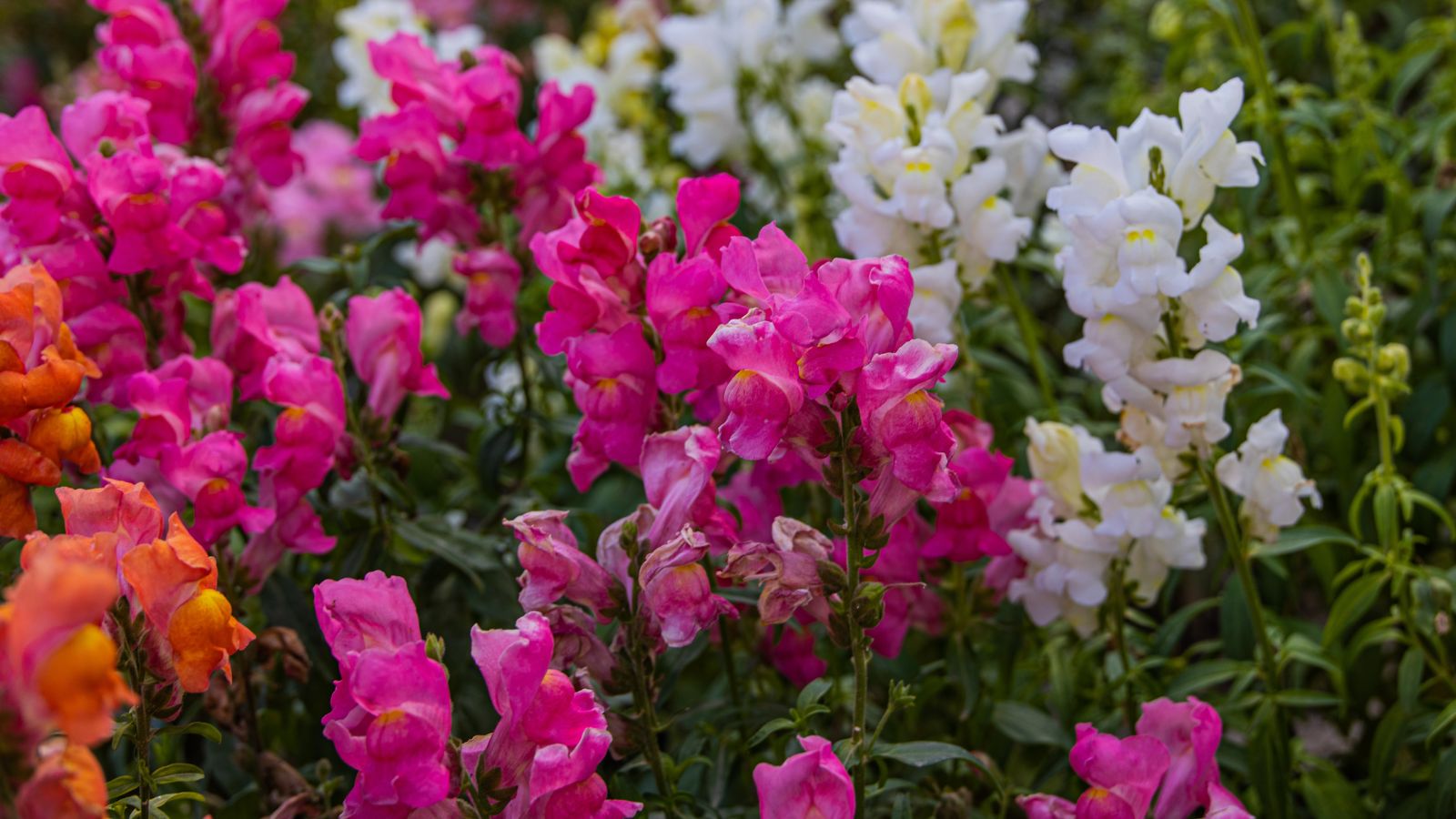
Image Credit: Depositphotos.
Another bitter beauty, this flower is named for the resemblance of its flowers to a dragon’s snout. Snapdragon produces full spikes of these colorful, two-lipped blossoms throughout the summer. A variety of cultivars provides many color combinations and heights.
Snapdragon does not tolerate heat and needs moist, rich, well-drained soil in full to part sun. Learn more about growing snapdragons.
3. Sweet Alyssum (Lobularia maritima)
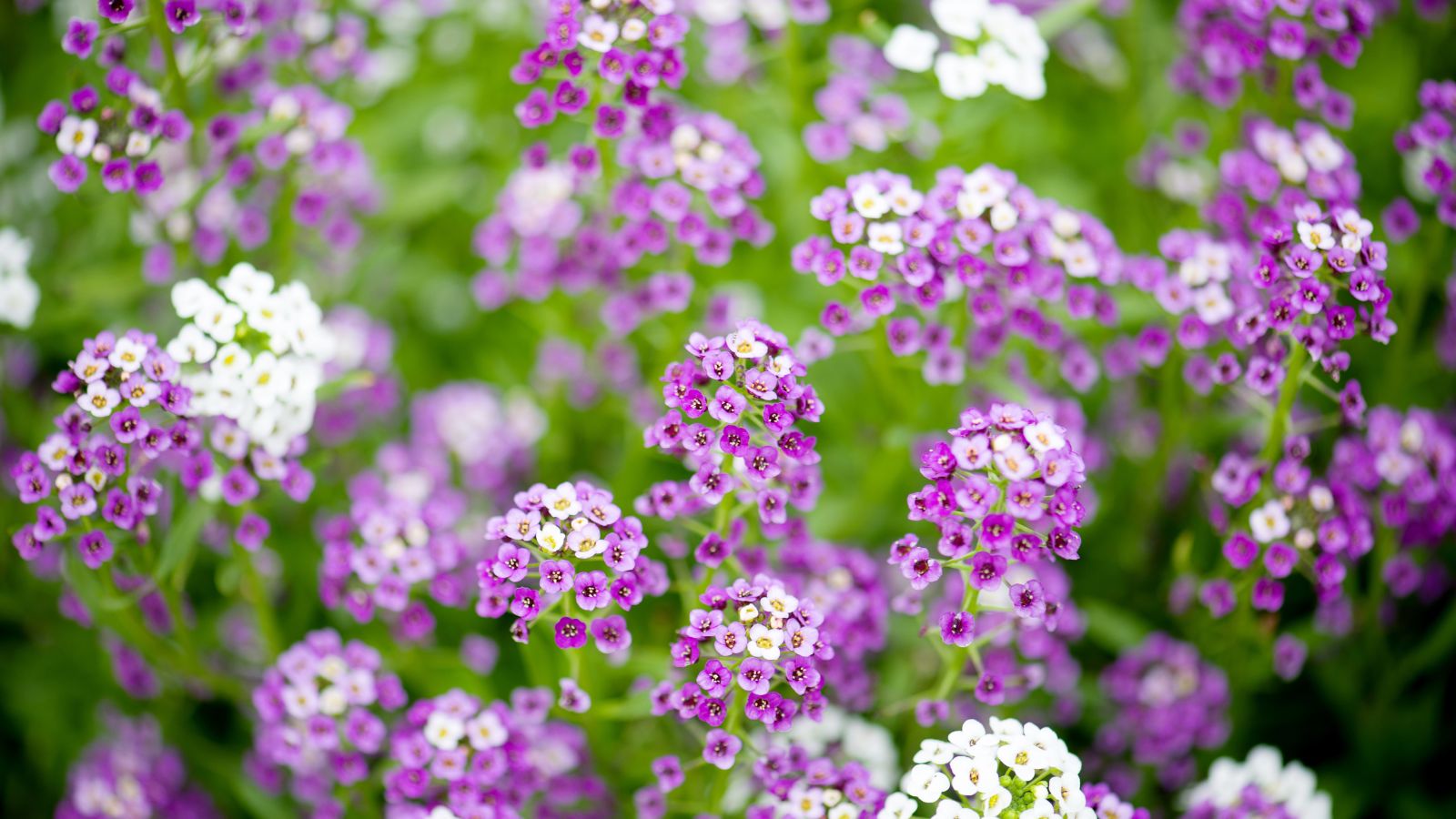
Image credit: Depositphotos.
Fragrant, domed clusters of tiny, white to lavender flowers cover sweet alyssum in spring and fall, typically petering off in the hot summer months. The gray-green, lance-shaped to ovate leaves provide a lovely backdrop to the dainty blooms.
Sweet alyssum likes moist soil with good drainage in full to part sun. It may self-sow. This flower also wards off rabbits due to its strong smell and mustard-tasting leaves and blooms.
4. Calendula (Calendula officinalis)
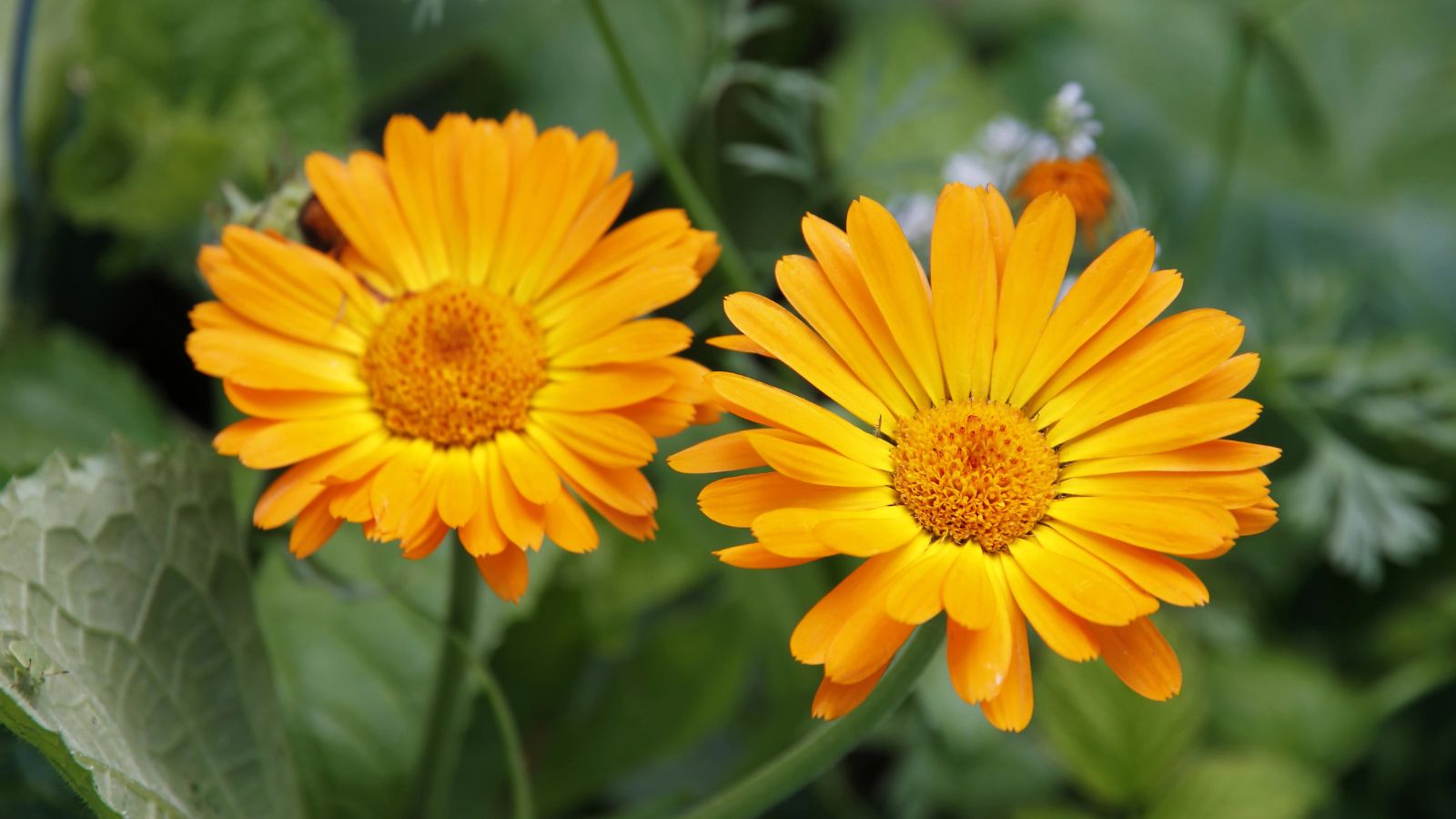
Image credit: Depositphotos.
Equally at home in the herb garden and flower bed, calendula produces rays of orange petals that make a lovely golden dye. Some flowers come in yellow or burgundy hues, and some have a dark center. The hairy, oblong leaves have a pleasant fragrance.
Calendula needs good drainage and full sun, though it may appreciate some shade in hot summers. It often reseeds. Plant it near your vegetables to deter deer and other pests because of its bitter taste.
5. Spider Flower (Cleome spp.)
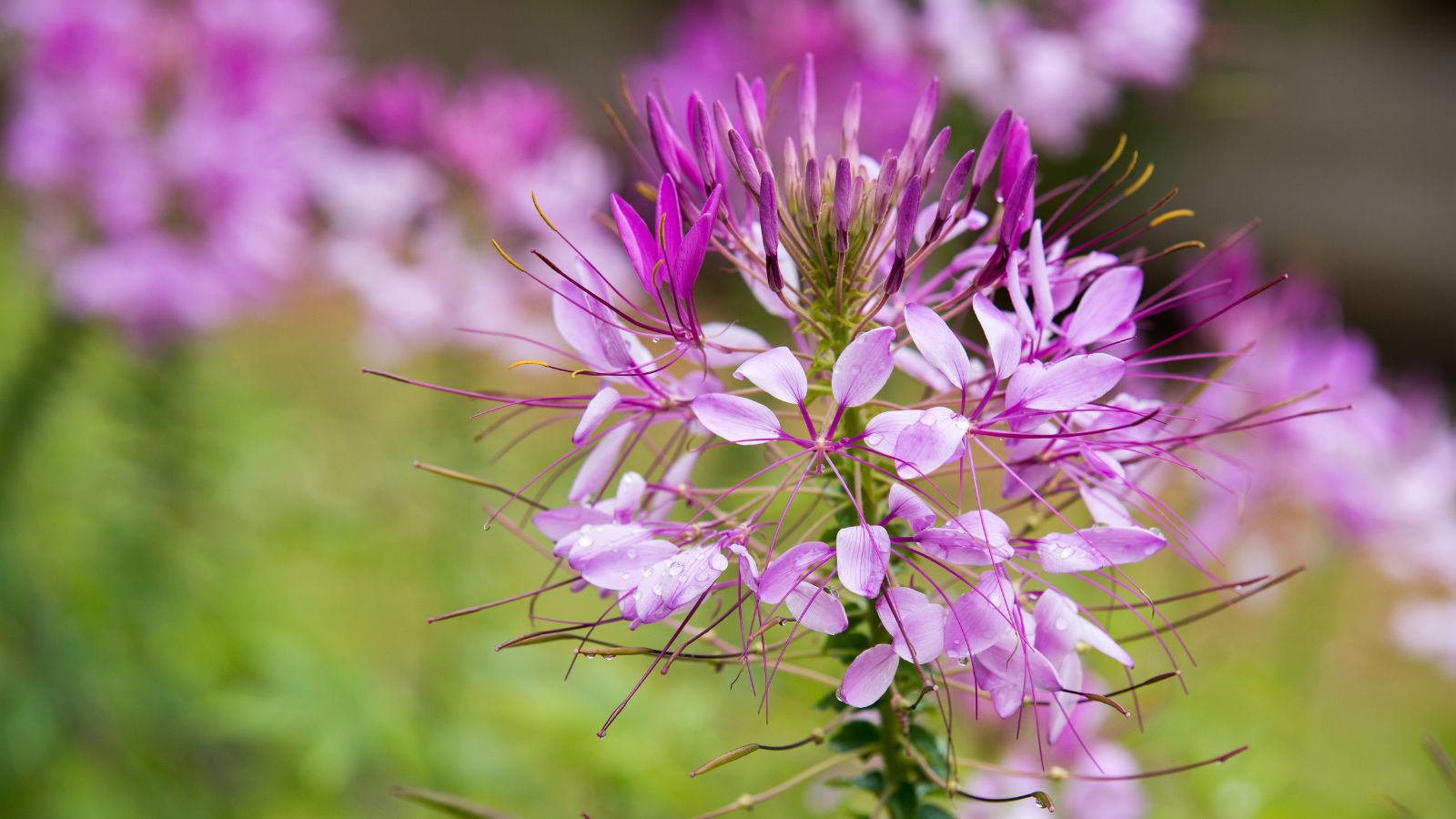
Image credit: Depositphotos.
The long, wispy stamens emerging from airy flower clusters give spider flower its name. It blooms all summer in shades of pink, purple, or white. A surprisingly tall annual, it can reach six feet high, though dwarf varieties are also available.
Spider flower tolerates some drought but prefers moist, well-drained soil and full sun. Too much water or fertilizer can result in leggy growth. Deer don’t like its toxic leaves and spiky stems.
6. Floss Flower (Ageratum houstonianum)
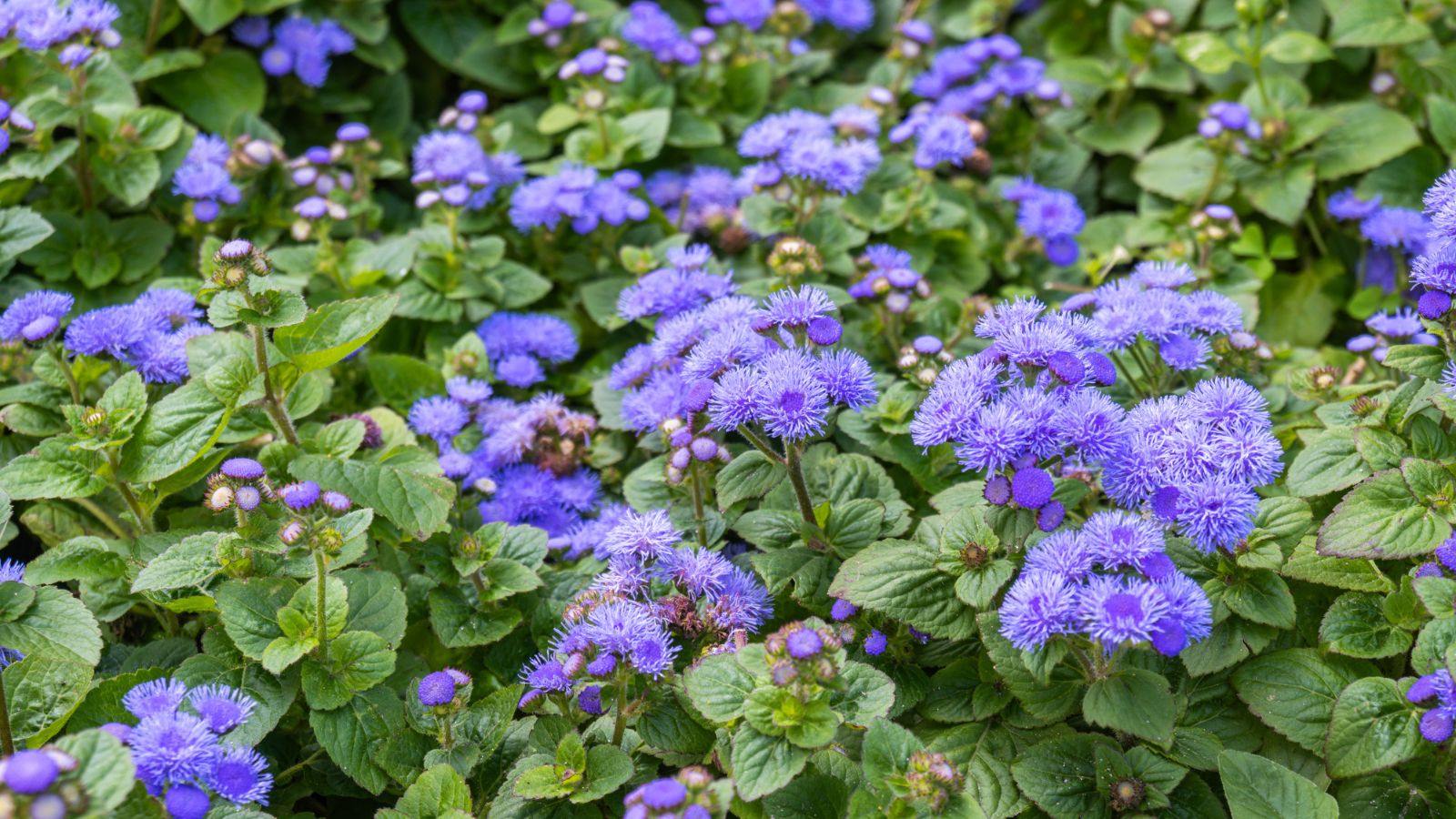
Image credit: Depositphotos.
Floss flower blooms from spring until frost, sending up clusters of fluffy, white to blue flowers held just above the ovate to deltoid foliage. It has a mounding habit, growing six inches to a foot tall, and the stems sometimes have an attractive reddish tint.
Moderately drought-tolerant, floss flower thrives in rich, moist soil with good drainage in full sun.
7. Poppy (Papaver spp.)
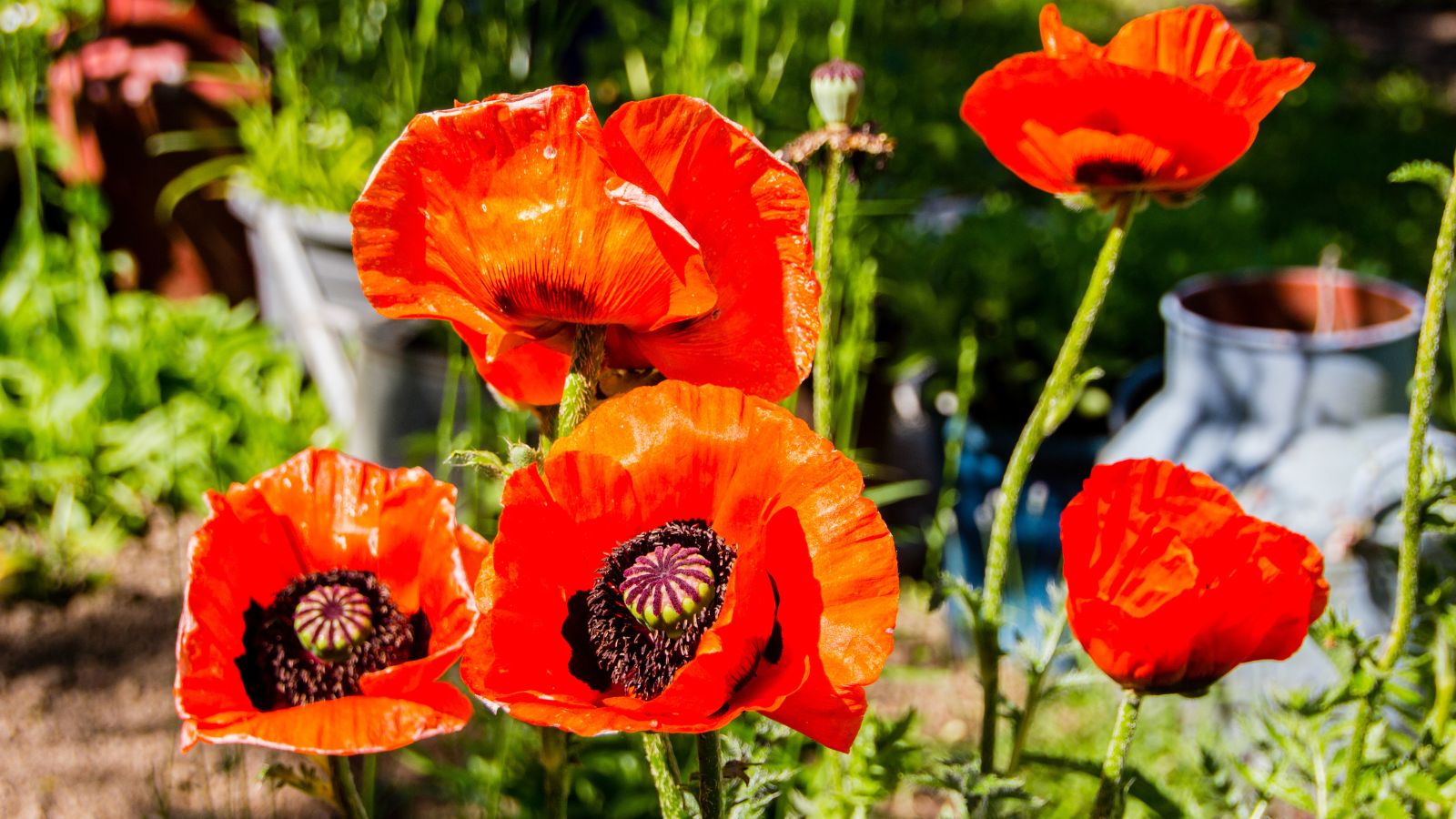
Image credit: Depositphotos.
Known for their papery, cup-shaped flowers, poppies come in a range of warm hues, often with a contrasting eye. The individual flowers bloom on long, spindly stems above ferny foliage in spring and early summer.
Poppies tend to prefer cooler climates and will grow best with full to part sun and good drainage. The milky sap of the stems and flowers themselves are too bitter, even toxic, to deer.
8. Heliotrope (Heliotropium arborescens)

Image credit: Depositphotos.
Another bitter flower, heliotrope features showy clusters of purple flowers with a strong fragrance reminiscent of vanilla. This shrubby tropical plant also has beautiful, rough, dark green leaves with prominent veins. Though it can reach six feet in its native habitat, heliotrope averages 12 to 18 inches tall as an annual.
Heliotrope likes full to part sun and well-drained soil high in organic matter.
9. Strawflower (Xerochrysum bracteatum)
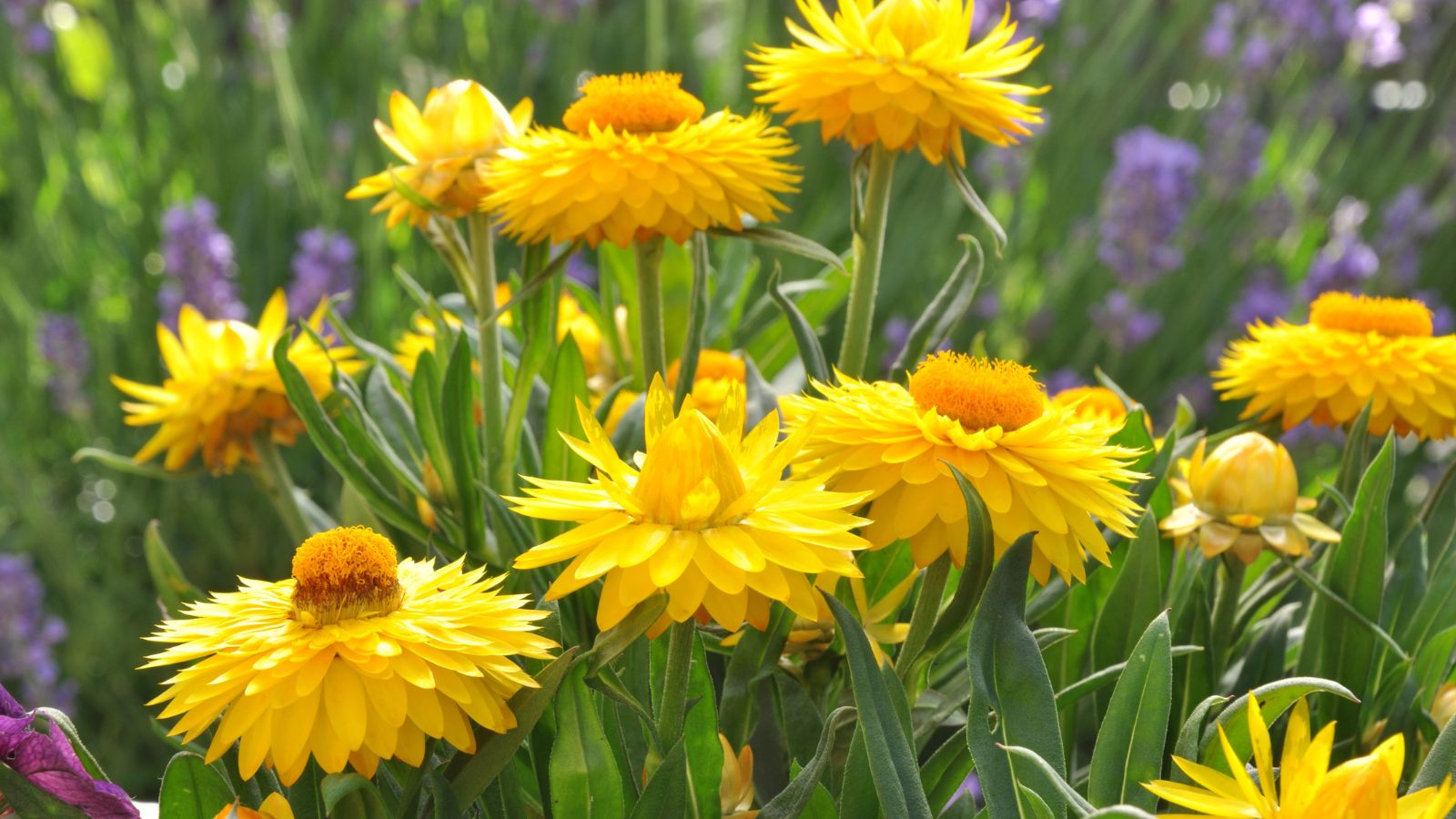
Image credit: Depositphotos.
However you choose to enjoy them, strawflowers last a long time. In the garden, they bloom from spring until frost, the straw-like petals opening to reveal a golden center. They also last a long time as cut flowers, and even when dried, these unique blooms retain their shape and color (white, yellow, orange, pink, or red).
Strawflower prefers average to dry soil and full to part sun. Though not essential, deadheading will encourage reblooming.
10. Flowering Tobacco (Nicotiana alata)
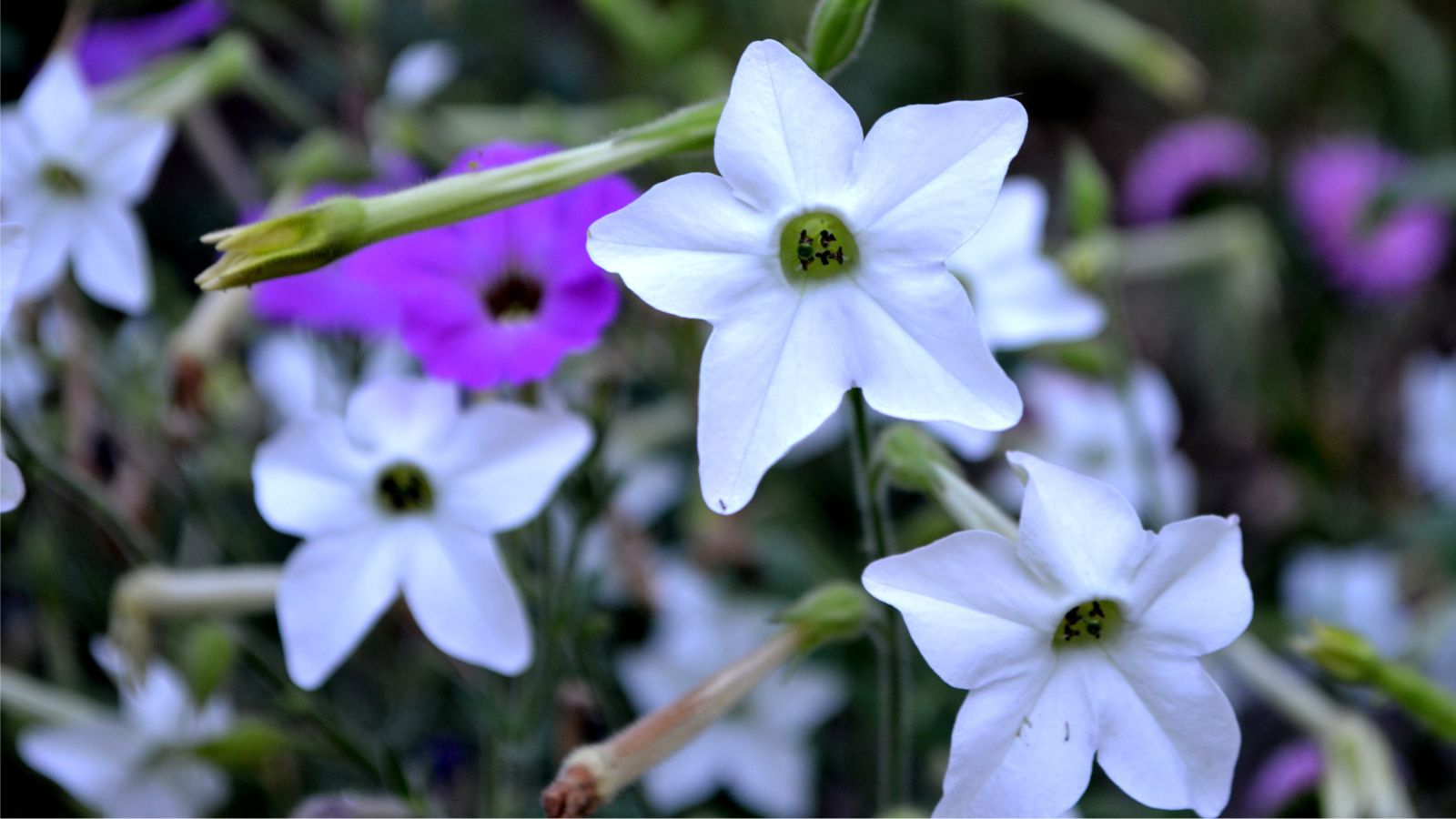
Image credit: Depositphotos.
An unappetizing nighttime bloomer, flowering tobacco attracts moths and other nocturnal pollinators. The showy, trumpet-shaped flowers open in the evening in shades of white, yellow, or red and bloom from early summer until frost. Plant flowering tobacco where its strong fragrance can be enjoyed.
Flowering tobacco likes moist, rich, well-drained soil in full sun to partial shade.
Beautiful and Aromatic, Deer-Resistant Perennials

Image Credit: Shutterstock.
Annual flowers are beautiful, but I would like to add a few perennials that come up year after year without me having to do anything other than enjoy them. That way, deer stay clear before I have to do much! These include daffodils, anemones, lavender, foxglove, sage, and peonies.

